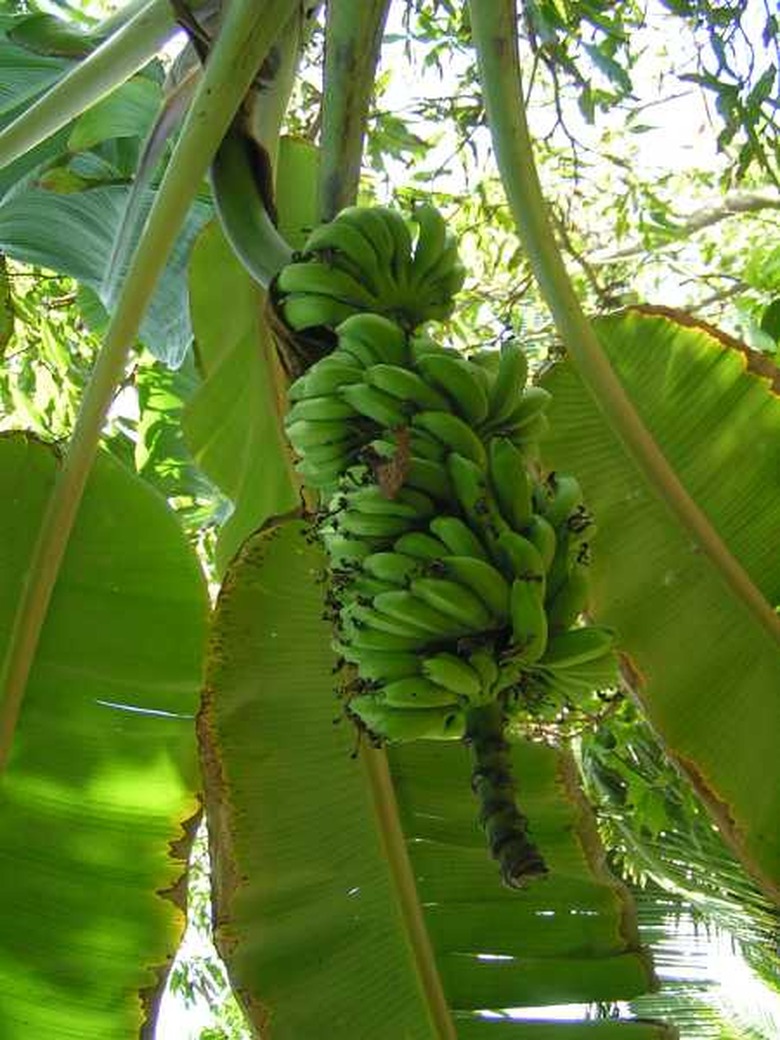How To Care For Banana
Things Needed
- Shovel
- Cow manure
- Organic fertilizer
Tip
Keep a small hand shovel handy to check soil moisture during the hot season by digging down a couple of inches. If your fruit is suffering from sun damage, drape it with a shade cloth during the hottest months. If you have high winds, support your banana tree with stakes and poles.
Banana trees can be a beautiful ornamental tree in your yard. In addition to being a beautiful form of a palm tree, banana trees can produce delicious fruit. Proper care is essential to the health and well being of your banana tree. Banana trees require good light, a lot of water, and well-drained soil. With proper care and fertilization, your banana tree will provide beauty and fruit for years.
Step 1
Plant your banana tree in a very sunny location. Banana trees thrive in bright sunshine. Sunny locations also tend not to allow water to accumulate and thus have fewer problems with banana tree root rot. Banana trees tend to do better in well-drained soils that have a higher percentage of organic matter.
- Banana trees can be a beautiful ornamental tree in your yard.
- In addition to being a beautiful form of a palm tree, banana trees can produce delicious fruit.
Step 2
Plant your banana tree in a hole about twice as wide and 1 1/2 times as deep as the container in which the young tree has been grown. Add a couple of inches of cow manure or other organic fertilizer to the bottom of the hole, plant the tree, and cover the roots with soil.
Step 3
Water your banana tree two to three times a week during the warm season. Water the tree any time the topmost 1 1/2 inches of topsoil are dry. If you had to plant in a shady spot, water less as banana trees are very susceptible to root rot. Banana trees are dormant in the winter and require much less water. Water every couple of weeks in the winter.
- Plant your banana tree in a hole about twice as wide and 1 1/2 times as deep as the container in which the young tree has been grown.
- Water the tree any time the topmost 1 1/2 inches of topsoil are dry.
Step 4
Prune or remove any frost-damaged stalks or trunks down to the root ball in the spring. In most cases, a severely pruned tree will re-row in the spring, replacing the frost killed portions. If you have an unusually severe winter and lose the entire tree, don't worry. Cut the dead portions in the spring and the banana tree will most likely come back. Leave the frost-damaged leaves on the plant until spring to protect the undamaged leaves.
Step 5
Fertilize regularly with good, organic fertilizer. Fertilizers derived from bat guano, fish, or seaweed are excellent banana tree fertilizers. If you are using chemical fertilizers, don't use too much nitrogen as it can turn the fruit black. Banana trees often need additional potassium.
- Prune or remove any frost-damaged stalks or trunks down to the root ball in the spring.
- If you are using chemical fertilizers, don't use too much nitrogen as it can turn the fruit black.
